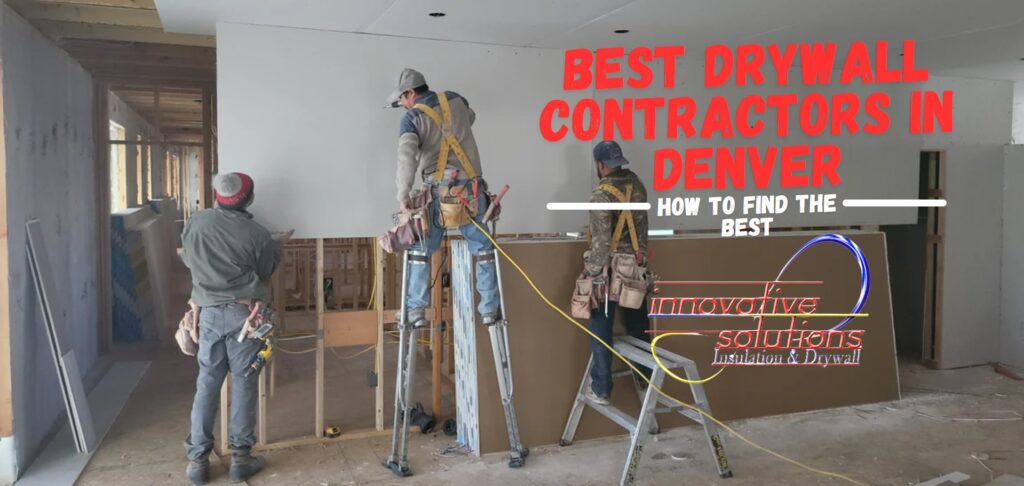Cellulose vs Fiberglass Insulation in Parker
Parker experiences a climate that significantly affects the durability and efficiency of drywall insulation. To maintain energy efficiency and keep utility bills in check, it’s important to choose the right insulation material. When deciding between cellulose vs fiberglass insulation in Parker, understanding the pros and cons of each can save you money and provide long-term benefits.
In this blog, I’ll help you explore the key differences and help you make an informed decision.
Origins of Cellulose and Fiberglass
Fiberglass, introduced in the 1930s by the Owens-Corning company, is one of the oldest insulation materials. Initially created from recycled glass, its popularity grew due to its fire resistance and ability to protect drywall.
On the other hand, cellulose is an eco-friendly insulation material made from recycled plant-based materials like newspapers. Although it gained popularity in the 1970s, cellulose is a newer insulation technique than fiberglass.
Key Differences: Cellulose vs Fiberglass Insulation in Parker
When comparing cellulose vs fiberglass insulation in Parker, it’s essential to understand their significant differences.
Here’s a quick overview of each material:
| Feature | Cellulose | Fiberglass |
| Material | Recycled paper treated with fire retardants and borate | Spun glass fibers |
| R-Value (per inch) | 3.7 - 4.2 | 2.2 - 2.5 |
| Cost | Moderate | Affordable |
| Installation | Requires specialized equipment for blowing in | Easier DIY installation with batts or rolls |
| Environmental Impact | Eco-friendly, made from recycled materials | Can cause skin and eye irritation during installation |
| Moisture Management | Absorbs and releases moisture, reducing condensation risk | Susceptible to mold growth if not properly installed |
| Sound Control | Excellent sound-dampening properties | Good sound absorption |
| Fire Resistance | High, with added fire retardant treatments | Non-combustible with added chemicals |
| Durability | Can settle over time, requiring frequent top-ups | Maintains thickness and R-value over time |
Climate-Specific Considerations
Parker’s climate, characterized by cold winters and moderate humidity, necessitates insulation that can maintain optimal temperature and humidity levels.
Cellulose
Cellulose has a higher R-value per inch compared to fiberglass, making it more effective in temperature maintenance. Its ability to absorb and release moisture reduces the risk of condensation buildup within walls, which is crucial after rain.
Fiberglass
Fiberglass, while less durable over time, requires professional installation to ensure it performs optimally in Parker’s climate. It needs to be installed in thick layers to prevent heat loss in the winter, making it essential to consult a professional insulation installer in Parker.
Read More: How Thick is R30 Insulation
Looking for Drywall or Insulation Services in the Denver Area and Beyond?

Installation and Maintenance
Both cellulose and fiberglass insulation have unique installation and maintenance requirements. While cellulose often requires water spray during installation to settle uniformly, fiberglass installation involves handling with protective gear to avoid skin and respiratory irritation.
Here’s a comparison:
| Aspect | Cellulose Insulation | Fiberglass Insulation |
| Installation | Needs professional installation and water spray for uniform settling | DIY-friendly with batts or rolls; protective gear needed |
| Installation Preparation | Clear debris and ensure a dry environment | Clear the area and wear protective clothing and goggles |
| Installation Process | Typically blown-in; it requires professional installation | Available in batts or blown-in; professional installation recommended |
| Ease of Installation | Moderate difficulty; requires specialized equipment | Batts are easier to handle; blown-in requires professional equipment |
| Time Required | Can be completed relatively quickly | Batts are quicker to install; blown-in fiberglass takes a similar time to cellulose |
| Health and Safety | Requires protective gear due to dust and respiratory irritation risk | Requires protective gear to avoid irritation from glass fibers |
| Maintenance | Settling over time may require periodic checks and top-offs | Typically stable; occasional checks for moisture or damage recommended |
Cost-Effectiveness and Environmental Impact
Though cellulose may involve higher upfront costs due to professional installation, it offers long-term benefits that can outweigh these expenses. Cellulose requires less maintenance and provides more effective insulation, reducing the workload on your HVAC system and lowering energy costs.
Additionally, the IRA offers incentives for using eco-friendly materials like cellulose, making it a cost-effective option.
In contrast, fiberglass is more affordable initially but may not be as durable over time, leading to increased maintenance costs. However, the inclusion of recycled glass in fiberglass products has reduced some of its environmental impacts.
Read More: Is Spray Foam Insulation Any Good?
People Also Ask
Is Cellulose or Fiberglass Insulation Better for Parker’s Climate?
Cellulose is better for Parker’s climate due to its higher R-value per inch, providing superior temperature control and moisture management compared to fiberglass.
What Are the Environmental Benefits of Cellulose Insulation?
Cellulose insulation is eco-friendly and made from recycled materials like newspapers. It reduces energy consumption, lowers your carbon footprint, and is eligible for IRA incentives.
How Does the Cost of Cellulose Compare to Fiberglass Insulation?
Cellulose insulation has higher upfront costs due to professional installation but offers long-term savings through reduced energy bills and less frequent maintenance compared to fiberglass.
Why Is Professional Installation Important for Cellulose Insulation?
Professional installation of cellulose insulation ensures uniform settling, maximizing its effectiveness in temperature control, and moisture management, and preventing future maintenance issues.
Can Fiberglass Insulation Be a DIY Project in Parker?
Yes, fiberglass insulation can be a DIY project using batts or rolls. However, protective gear is essential to avoid skin and respiratory irritation during installation.
For Parker homeowners weighing the benefits of cellulose vs fiberglass insulation, it’s clear that each material has its own strengths.
Cellulose offers superior energy efficiency and eco-friendliness, while fiberglass provides a more budget-friendly, DIY-friendly option. However, the effectiveness of both materials depends heavily on proper installation.
At ISID, we don’t believe in a one-size-fits-all approach to insulation. We create customized insulation plans tailored to your home’s needs, ensuring maximum comfort, energy efficiency, and cost savings. Whether you choose cellulose, fiberglass, or a combination of both, our team is here to help.
Contact ISID today to schedule a home audit and discuss your insulation needs with our experts.




